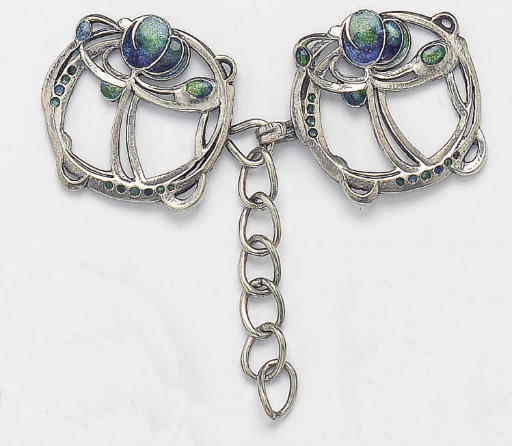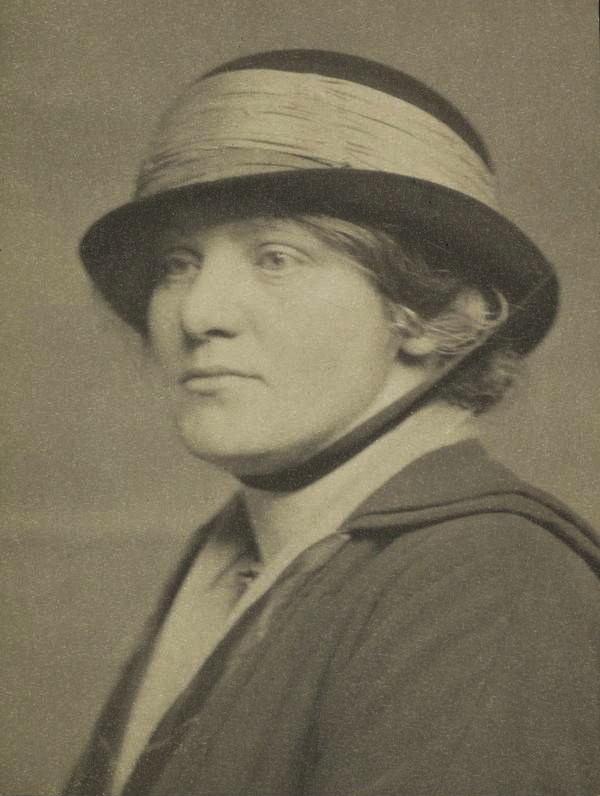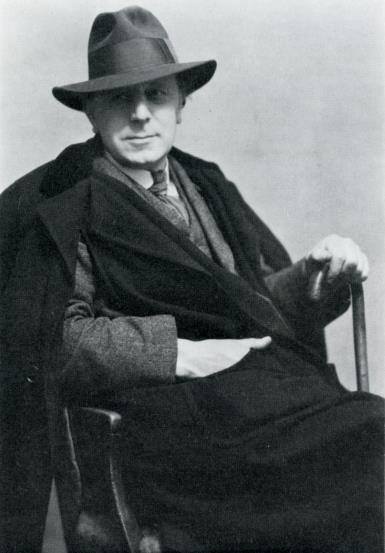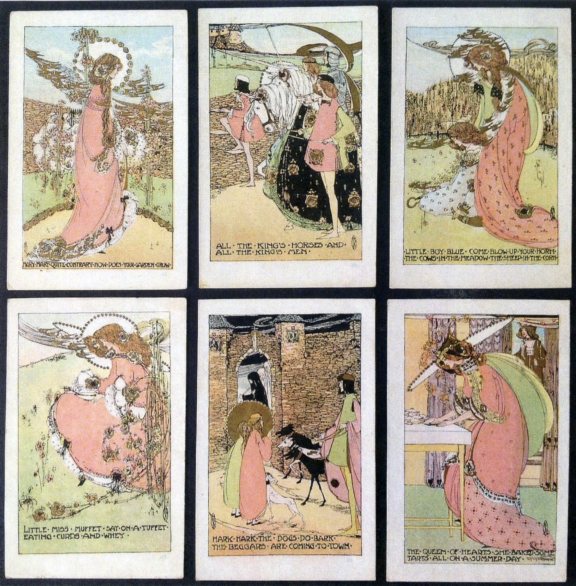Newsletter
The Arts and Crafts Movement was far more than just the decorative arts; it represented a complete shift in aesthetic tastes that rebelled against the previously held Victorian ideals. These new trends in style were seen not only in people’s homes, but also in the ways they adorned themselves with clothes and jewelry.
Bulky floor length gowns with cinched waists and high necklines over heavy corsets and bustles were replaced with garments that did not restrict movement. These new fashions were made of light fabrics that draped the body, instead of holding it in and did not require the ridged undergarments of Victorian gowns. As fashion changed so did the jewelry designed to accessorize it. A simple brooch worn at the collar, a belt buckle, or a necklace were most commonly chosen to be a single focal point of an ensemble.
As an organization dedicated to the Arts and Crafts movement, The Two Red Roses Foundation could not fully represent the aesthetics of the era without including jewelry in its collection. Recently, the Foundation has begun acquiring some of the best examples from important British Arts and Crafts jewelry designers such as Archibald Knox, Charles Robert Ashbee, Arthur Gaskin, Charlotte Newman, Oliver Baker, Murrle Bennett and Co and, recently, Jessie Marion King.
Jessie King’s beautiful sterling Cloak Clasp, designed and created in 1906 for the Liberty & Co. in the TRRF collection, is characteristic of the Arts and Crafts movement in its materials, motifs, and handmade appearance. The Cloak Clasp is embellished with both cloisonné enamel (decorative work in which enamel, glass, or gemstones are separated by strips of flattened wire placed edgeways on a metal backing), and champlevé enamel (enamelwork in which hollows made in a metal surface are filled with colored enamel) in deep green and blue hues. The interlacing and overlapping lines are inspired by traditional Celtic symbols that resemble knots and symbolize eternity and the interconnectedness of life. This Cloak Clasp, and other items in Liberty’s Cymric line, is meant to look handmade, with unplanished (not polished) surfaces, further emphasizing the Arts and Crafts aesthetic.
Liberty, which had opened its first shop on Regent Street in London in 1874, selling silks imported from the East, began in the 1880’s to commission designs for fabrics, furniture, and jewelry from notable Arts and Crafts artists such as Archibald Knox, Rex Silver, Oliver Baker, and Jessie M. King. The jewelry King designed for Liberty & Company was part of the company’s Cymric line, a Celtic-revival line launched in 1899 that used the visual language of the Arts and Crafts movement featuring non-precious metals and stones and a handmade look, even though the works were mass produced to keep costs low. These influential designs helped solidify what became known as the Liberty Style, a style that is synonymous with Art Nouveau in Europe and the Arts and Crafts Movement in America.
Jessie M. King, born in Scotland in 1875, despite a strict religious upbringing and parental disapproval of her artistic career, entered the Queen Margaret College in Glasgow in 1891, the Glasgow School of Art in 1892, and later taught courses in book decoration and design at her Alma Mater from 1899-1908. Jessie King, known as one of the Glasgow Girls, a name given to the influential female artists practicing in and around Glasgow, Scotland in the late 1800’s was a prolific artist throughout her life, working as an illustrator, author, designer of jewelry, greeting cards, fabric, ceramics, batik textiles, and murals. Her signature style was whimsical representations of people with elongated forms and exaggerated silhouettes, rather than realistic depictions of her subjects. This style would become known as Art Nouveau or the Glasgow Style.
She was influenced by the Art Nouveau of the period and by the works of Aubrey Beardsley, Rossetti Burne-Jones and the “Glasgow Four” (Charles Rennie Mackintosh, James Herbert MacNair, and the sisters, Margaret Macdonald and Frances Macdonald). In 1902 her binding for "L'Evangile de L'Enfance" was awarded a gold medal in the International Exhibition of Modern Decorative Art, held in Turin. King became a committee member of the Glasgow Society of Artists (1903) and a member of the Glasgow Society of Lady Artists (1905). In 1907 she married Earnest Archibald Taylor, a well-known Scottish artist known for his paintings, watercolors, etchings, furniture designs, and stained glass. He designed the leaded glass window in TRRF’s collection, Two Red Roses Across the Moon, that inspired the TRRF name and logo.
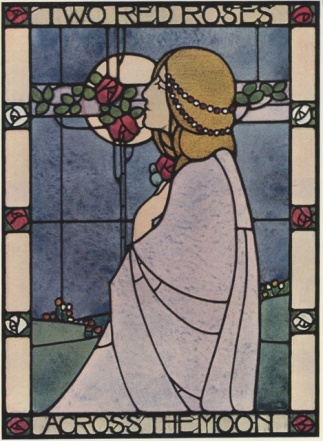
Pencil and watercolor on card, 67 ¾ x 48 ½ inscribed in pencil on mount “E.A. Taylor Kirkcudbright” - Illustrated in the 1910 Studio Yearbook of Decorative Art, p.113
Jessie’s jewelry is rare and mostly unsigned; her original prints are even rarer and difficult to procure. All her work, not already in museums and private institutions and collectors, was liquidated at a sale held by Sotheby, Parke Bennett & Co., on June 21, 1977, in Charles Rennie Mackintosh’s Queen’ Cross Church. Copies of the Sotheby’s auction catalog are rare and expensive. The copy in the TRRF Rare Book collection is titled Jessie M. King and E.A. Taylor: Illustrator and Designer, by H. Jefferson Barnes, Joan Hughson and Cordelia Oliver, published by Paul Harris Publishing and Sotheby’ Belgravia. TRRF owns a set of original vintage postcards with twelve color lithographs on moiré paper with illustrations of nursery rhymes.
In 1915, Jessie King and E.A. Taylor moved to Kirkcudbright, Scotland, where they lived, worked and raised their family, until her death in 1949.
